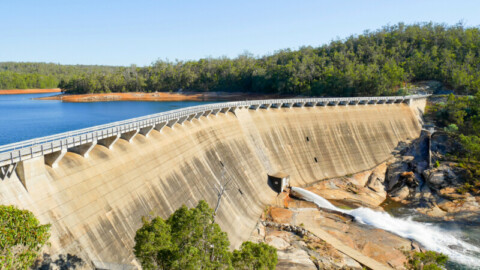Bioenergy Australia has released the Bioenergy State of the Nation Report produced in collaboration with KPMG that identifies Australia’s significant bioenergy opportunity and provides a criteria for kick-starting Australia’s bioenergy economy.
The opportunity for Australia is significant and multi-faceted, offering a $3.5-$5 billion investment opportunity, mostly in regional economies, which the Australian government is being urged to address.
Bioenergy Australia CEO, Shahana McKenzie, said, “The report reviews the policies of states and territories in order to share learning and facilitate policy transfer across Australia, with much to be gained through adoption of ‘best practice’ approaches throughout Australia.
“For example, Queensland has adopted a number of successful policies which can be adapted and deployed to drive bioenergy uptake across the country.”
Bioenergy is generated from the conversion of solid and liquid biomass products for use as electricity, heat, gas, liquid fuels and bio-based products, and delivers a range of benefits such as employment and economic development of rural/agricultural communities, energy security, utilisation of waste streams and reduction in greenhouse gas emissions.
Shadow Minister for Climate and Energy, Mark Butler, said, “There are huge opportunities for Australia to embrace bioenergy. I welcome this important report from KPMG and look forward to working with Bioenergy Australia in this exciting transition.”
Ms McKenzie explained that what differentiates Queensland as the clear leader is the fact that they have identified bioenergy as a huge opportunity for their state, and have developed a vision to capitalise on it.
In addition, their policy objectives are better defined and more aligned to the bioenergy sector compared to other states and territories, with strong evidence of advocacy of the benefits and opportunities from bioenergy.
While the Federal Government has implemented mechanisms to reduce carbon emissions, such as the Renewable Energy Target and Emissions Reduction Fund, a national vision, policy objectives and/or policy levers would unlock Australia’s bio economy.
This report indicates from a local and global level these factors are critical to the development of a bio-economy, with the potential to positively impact big issues for Australia such as emissions, utilisation of waste streams and regional growth.
Dr John Hewson, former Liberal party leader and bioenergy advocate, said, “An overlooked and very important consequence of the “climate wars” in the last couple of decades has been the failure of governments to develop a comprehensive national waste and bioenergy strategy.
“This is particularly hard to understand and accept given our national addiction to the barbaric environmental practice of land filling, the lack of a fuel security strategy, the failure of both State and Federal governments to design and implement effective regional policies, and the availability of a host of proven and commercial technology solutions. Short-term politics has again served to only squander significant growth and employment opportunities.”
State and Territory Overview Report assessments were based on bioenergy performance measured against five evaluation criteria: policy development and effectiveness, bioenergy project development, technology and feedstock, sustainability guidance, advocacy and education.
The majority of the 179 commissioned bioenergy projects are in Queensland, New South Wales and Victoria (77 per cent) and the main technologies comprise combustion (56 per cent) and anaerobic digestion (29 per cent). All states are lacking diversification across feedstock and technology, and most projects produce electricity as an output, which a national vision could transform.
“Queensland is driving the bioenergy agenda on a number of fronts, and should be commended for the incredible work happening across the state. They have a government who recognises bioenergy as a priority industry, actively rolling out new projects through the delivery of the Biofutures Roadmap and Biofutures Program,” Ms McKenzie said.
Around The World
The report found Australia in the bottom quartile for bioenergy contribution globally, lagging behind other Organisation for Economic Co-operation and Development (OECD) countries placing 19 out of 24 reviewed.
Ms McKenzie explained there were a host of global initiatives identified to inspire Australia in the report; from committed targets for renewables, to investment support and renewable heat incentives. The report noted Sweden has a landfill ban for organic waste and the US a loan guarantees for the establishment of biorefineries.
“The global disparity in contribution we see is concerning, particularly with the ambitious targets set for emissions reduction by the marine and aviation industries. There are massive changes ahead to the fuel mix globally and we sit well behind at four per cent of total energy consumption for biomass energy or fuel purposes versus the EU’s 10 per cent.
“There is a new industry waiting to be developed for bio-chemicals which can replace the need for fossil-fuel based derivatives entirely. If we don’t seize this opportunity we will be left behind and end up importing what could be made locally, with significant economic and environmental impacts.”
A recently released market analysis and forecast report by the International Energy Agency predicted modern bioenergy will, over the next five years, have the biggest increase in renewable energy consumption, driving 30 per cent of global renewable energy consumption growth.
Ms McKenzie explained as with any emerging sector, government support plays an important role in removing barriers and accelerating the development of new projects.
“There is no shortage of viable options we can implement to drive us forward, and we hope the Bioenergy Australia State of the Nation report can be this force for change in the sector so Australia can leverage the wide-ranging potential benefits of a bio-economy before it’s too late.”
















